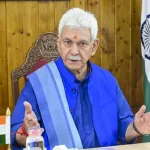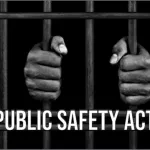INTRODUCTION
Mental health is a state of well-being in which the individual realizes his or her own abilities, can cope with the normal stresses of life, can work productively and is able to make a contribution to his or her community. However in the current times, there is a huge surge in mental health problems across the globe among people and is becoming an issue of concern. Therefore, it becomes necessary to raise awareness of mental health illnesses while educating the population and mobilizing efforts to support mental health.
EXTENT
In Kashmir, as per a study done by the Institute of Mental Health and Neurosciences (IMHANS), Kashmir, in collaboration with Action Aid Association with support of Directorate General for Humanitarian Aid and Civil Protection (ECHO), shows, 11.3 percent of adult population suffers from mental illness in the valley. This prevalence is significantly higher than the Indian national average of 7.3 percent. The study shows the prevalence of mental health disorders was more in females (12.9 percent) than males (8.4 percent).
UNDERSTANDING THE RISK FACTORS
As per a recent research study, most strongly associated factors with mental disorders are deprivation. Lifetime risk of affective disorders, panic disorders, generalized anxiety disorder, specific phobia and substance use disorders are found to be highest among uneducated and unemployed persons.
Psychological factors such as headache and body ache, sensory symptoms and nonspecific symptoms such as tiredness and weakness also makes people vulnerable to mental disorders. Biological factors affecting mental disorders are genetic origin, abnormal physiology and congenital defect.
Disasters are potentially traumatic events which impose massive collective stress consequent to violent encounters with nature, technology or mankind. A meta-analysis showed that post-traumatic stress disorder, generalized anxiety disorder and panic disorder were common among disaster victims. As per WHO estimates, 10 percent of the people who experience traumatic events will have serious mental health problems and another 10 percent will develop behaviour that will hinder their ability to function effectively, in the situations of armed conflicts.
Drug abuse is becoming a serious issue of social concern during current times and the percentage of indulgence is witnessing an upsurge since the last many years. Young population in particular are indulged into various kinds of social evils — prominent being drug and substance abuse — a way towards ruining a purposeful life and career. Drug abuse has been a factor in creating violations of multiple — from domestic violence, sexual violence, violence of the community to violence of personal ambitions including emergence of suicidal thoughts, besides posing multiple health risks. One of the direct or indirect manifestation’s of drug abuse is the rising incidence of suicides among people in general and youth in particular — which is emerging as a grievous public health cum mental health concern.
Suicidal behaviour is found to have more predilection with female gender, working condition, improper decision making, premarital sex, physical abuse and sexual abuse. Ongoing stress and chronic pain heightened the risk of suicide. Living alone and a break in a steady relationship are also significantly associated with suicide. Work environment, school environment and family environment plays an important role in pathogenesis of mental disorders.
Understanding the issues deeply, two core risk factors seem to be responsible for rising incidence of suicides among youth — social evils like drug addiction and emerging health issues like mental health illnesses. Mental health issues are becoming a grave concern and the maximum percentage of people do suffer one or other form of mental health problem during current times including depression, anxiety, bipolar disorders and many other illnesses.
Mental health illnesses are a crucial provocative factors responsible for multiple social and behavioural problems including development of suicidal thoughts. And drug addiction is one of the major concerning social menaces that needs an effective redressal, besides other addictions.
Moreover, stigma related to mental disorders, lack of awareness in common people, delayed treatment seeking behaviour, lack of low cost diagnostic tests and lack of easily available treatment are the main hurdles in combating the problem of mental health issues. In addition factors pertaining to traditional medicine and beliefs in supernatural powers in community delays diagnosis and treatment. Lack of political commitment to non communicable diseases, further aggravates the load of mental disorders.
RECOMMENDATIONS (THE WAY FORWARD)
Burden of mental disorders seen by the world is only a tip of the iceberg. While going through a recent research study I acknowledged that the authors have validated and enormously worked on mental health. To promote mental health, there is a need to create such living conditions and environments that support mental health and allow people to adopt and maintain healthy lifestyles. A society that respects and protects basic, civil, political, and cultural rights is needed to be built to promote mental health.
Mental health policies should not be solely concerned with mental disorders, but should also recognize and address the broader issues which promote mental health. This includes education, labour, justice, transport, environment, housing, and health sector. For attaining this, inter-sectoral coordination is a mainstream.
There is a need to aim at improving child development by early childhood interventions like preschool psychosocial activities, nutritional and psycho-social help to give roots for a healthy community. Presently, the community is also demanding the skills building programme and child and youth development programmes.
Moreover, there is a need to do socioeconomic empowerment by improving access to education and employment opportunities. Social initiatives should be taken to bring people together for social, health and educational reasons as well as income generation activities. Society needs to be free of discrimination and violence. Reducing discrimination against sex, caste, disability and socioeconomic status is an important aspect to reduce mental disorders. Social support for elderly people needs to be strengthened. Programmes targeting towards indigenous people, migrants and people affected by disasters and armed -related violence need to be established.
Another key to reduce mental morbidity is to strengthen the treatment of mental disorders at the level of primary health care. There are multiple interventions needed to prevent the progression of mental disorders from early manifestations to more serious and chronic cases. There is a need for simple, easily available diagnostic tests and low cost treatment to provide better primary health care.
Reluctance to drug abuse could be a reforming initial step to change its course for the benefit of society. Besides working on thoughts of people addicted to drug abuse, positive motivation, vocational guidance, educational-deaddiction counselling could be revolutionary steps to alleviate them from such abuse. Moreover, there is a need to adopt a soft and caring approach towards drug addicts, understand their concerns, elucidate the reasons and accordingly take comprehensive steps for redressal. Educating the people properly on risks for drug abuse and aggressive behaviours, providing screening tools to identify risk factors and/or mood disturbances, using evidence-based interventions — including collaborative, multi-disciplinary teams to manage depression and other mental health issues– shall serve the purpose. Inclusive and accountable institutions of social justice, health and social reformation need to work hand in hand to provide integrated and highly intellectualized solutions for eliminating drug abuse from society.
Every sector of the society has a crucial role to play in addressing the rising incidence of social evils — including Government, civil society, NGO’s, religious scholars, teaching community among others. Having said that, there is a need to engage government, individuals, non-governmental organizations, the private sector, civil society in mass media campaigns to address the social evil of drug abuse. Educating the public, to mobilize political will and resources to address drug abuse problems are crucial need of the hour. Religious scholars need to get sensitive towards drug menace seriously –conduct sermons and highlight the social evils at religious places of worship.
Having said that, mass health awareness sessions should be conducted in the community regarding drug abuse in general and alcohol abuse in particular.
Moreover, social stigma associated with mental health issues is unfortunately a big challenge and we need to put our efforts best in breaking this stigma so that people who suffer — shall reveal their illnesses and ensure help.
More to say, psychiatric specialists, clinical psychologists and epidemiologists need to reorient their research in such a way that true burden of mental disorders are estimated at community level. This would provide a true situation of the mental health problem. Secondary prevention must focus on strengthening the ability of primary care services to provide effective treatment.
Dr. Tasaduk Hussain Itoo





